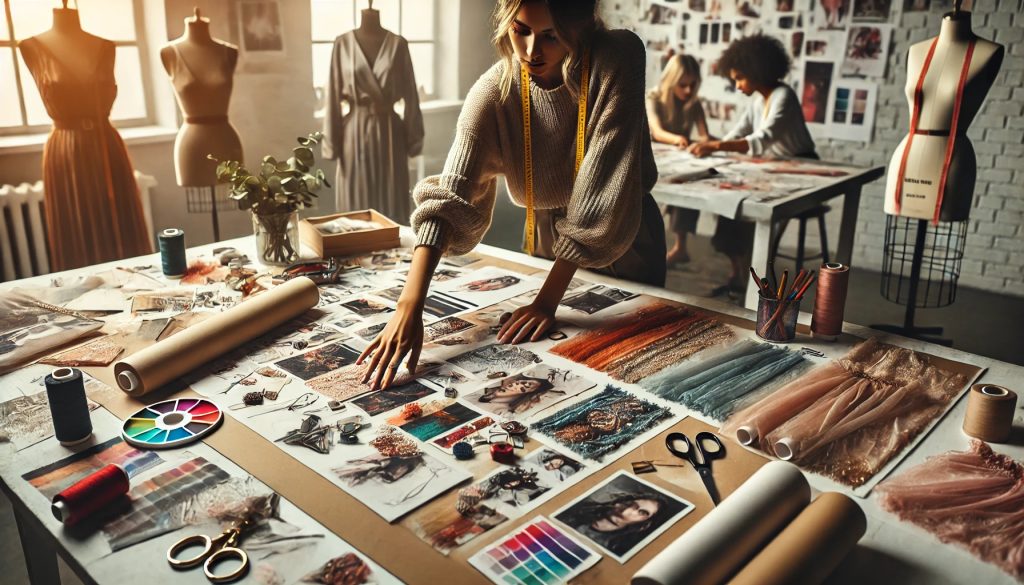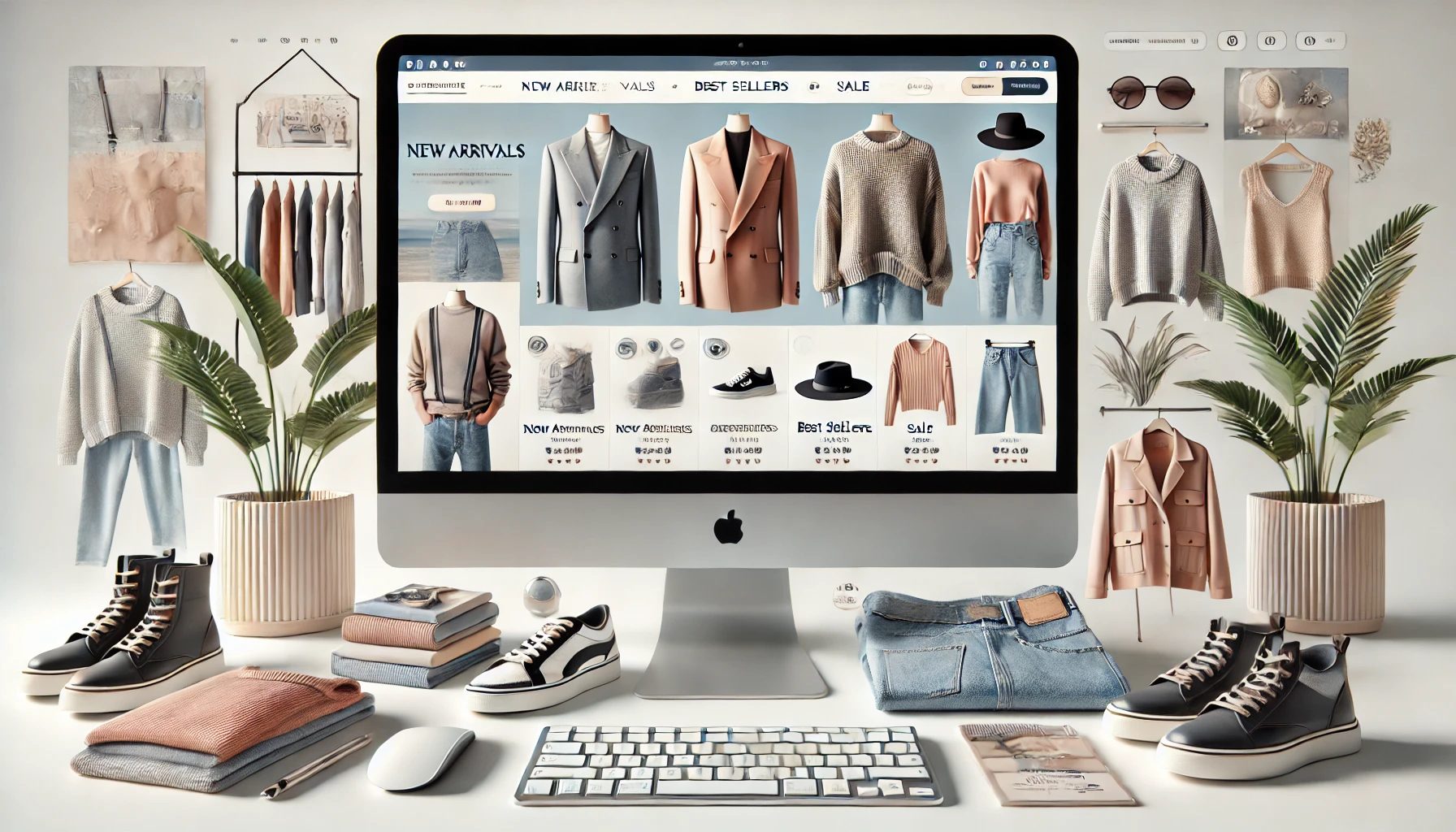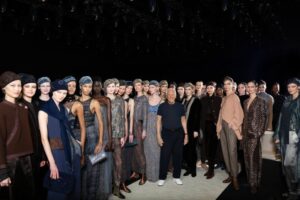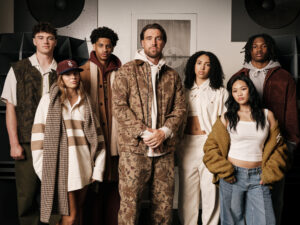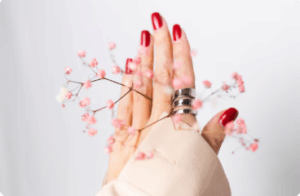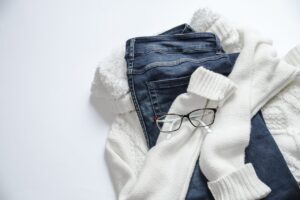The fashion world is full of exciting opportunities, whether you’re dreaming of designing stunning outfits, styling celebrities, or working behind the scenes to bring collections to life. Fashionista careers are as diverse as they are creative, and there’s something for everyone who’s passionate about style and trends. Whether you’re just starting out or thinking about switching paths, understanding the options and skills needed can help you take the first step into this dynamic industry.

Image: School of Fashion Design, Boston
Key Takeaways
- Fashionista careers cover creative roles like designing, styling, and illustrating, as well as behind-the-scenes merchandising, buying, and production.
- Media roles in fashion include journalism, photography, blogging, and influencing, offering plenty of ways to share your passion for style.
- The business side of fashion involves marketing, brand management, and retail, making it a great fit for those with a knack for strategy.
- Sustainability is growing in fashion, with careers in ethical production, recycling, and upcycling becoming more popular.
- Education, internships, and online courses can help you build the skills and connections needed to succeed in the fashion industry.
Understanding the World of Fashionista Careers
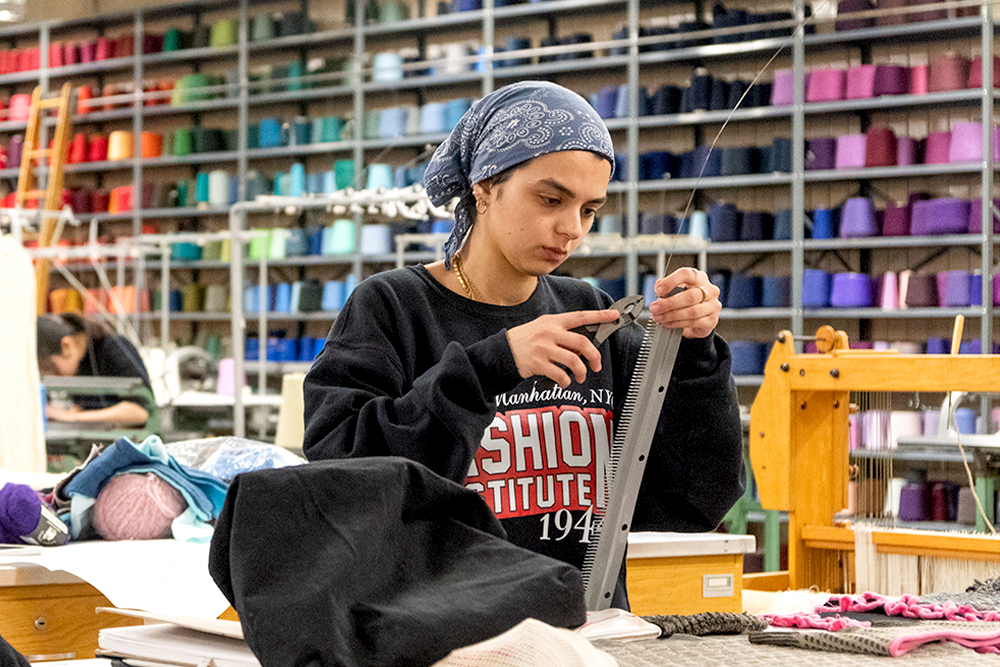
Image: FIT New York
What Defines a Fashionista Career?
A fashionista career is all about working in the creative, dynamic world of fashion. It involves roles that range from designing clothes to managing brands, and everything in between. The heart of these careers lies in creativity and a passion for style. Whether you’re sketching designs, curating outfits, or planning marketing campaigns, there’s a space for everyone who loves fashion.
The Evolution of Fashion Careers Over Time
Fashion careers have come a long way. Decades ago, opportunities were mostly limited to designers and tailors. Today, the industry has expanded to include roles like fashion bloggers, sustainability consultants, and even digital wardrobe stylists. With the rise of technology and social media, new doors have opened, creating jobs that didn’t exist a few years ago.
| Decade | Popular Fashion Roles | Emerging Roles |
|---|---|---|
| 1980s | Designer, Tailor | – |
| 2000s | Stylist, Fashion Photographer | Blogger |
| 2020s | Sustainability Consultant | Digital Wardrobe Stylist |
Key Skills Needed to Thrive in the Fashion Industry
To succeed in fashion, you need a mix of creative and practical skills. Here’s a quick list of key abilities:
- Creativity: Whether designing or styling, thinking outside the box is critical.
- Communication: You’ll need to share ideas clearly, whether with clients, teams, or audiences.
- Business Savvy: Understanding budgets, marketing, and trends is a huge plus.
Fashion isn’t just about looking good—it’s about making people feel something. That’s what makes it such a rewarding field.
Exploring Creative Roles in Fashion
Becoming a Fashion Designer
Fashion designing is one of the most recognizable roles in the industry. It’s all about creating unique clothing, accessories, or footwear that reflect both personal vision and market trends. A successful designer combines creativity with technical skills, such as pattern-making and fabric knowledge. Many designers work for established brands, while others launch their own labels. If you’re considering this path, start by sketching ideas and experimenting with materials to refine your style.
The Role of a Fashion Stylist
A fashion stylist curates outfits for clients, photo shoots, or events. This role is less about creating clothes and more about assembling the perfect look. Stylists often work with celebrities, magazines, or advertising agencies. To excel, you’ll need a sharp eye for detail, a sense of current trends, and strong communication skills. Building a versatile wardrobe and understanding how to mix and match pieces are key to success in this field.
Careers in Fashion Illustration
Fashion illustrators bring designs to life on paper or digitally. They often collaborate with designers to visualize concepts before they’re produced. This career requires artistic talent and proficiency with tools like pencils, markers, or graphic design software. Illustrators may work freelance or with design houses, creating everything from initial sketches to polished presentations. If you love drawing and have a passion for fashion, this could be your ideal creative outlet.
Creative roles in fashion offer endless opportunities to express individuality while contributing to a dynamic industry. Whether you’re sketching designs, styling outfits, or illustrating concepts, there’s a niche for every talent.
Behind-the-Scenes Opportunities in Fashion
The Importance of Fashion Merchandising
Fashion merchandising is all about making sure the right products get to the right customers at the right time. It’s where creativity meets business strategy. Merchandisers analyze trends, plan inventory, and collaborate with designers and buyers to create collections that resonate with shoppers. If you love numbers and style, this could be your thing.
Some skills you’ll need include:
- A knack for trend forecasting.
- Strong analytical abilities.
- Communication skills to work with different teams.
What Does a Fashion Buyer Do?
Fashion buyers are the people behind what you see in stores. They decide which items to stock by predicting what customers will want next season. It’s a mix of art and science—balancing trend analysis with budgeting. Buyers often attend fashion shows and meet with designers to curate collections. Attention to detail and negotiation skills are key here.
A buyer’s job isn’t just about picking pretty clothes—it’s about understanding what will sell and why.
Exploring Careers in Fashion Production
Fashion production is the backbone of the industry. It involves turning designs into actual products, which means working closely with manufacturers, sourcing fabrics, and ensuring quality control. If you’re detail-oriented and enjoy problem-solving, production might be a good fit.
Key parts of the job include:
- Coordinating with factories and suppliers.
- Managing timelines to meet deadlines.
- Ensuring the final product matches the designer’s vision.
For those curious about the broader fashion landscape, check out fashion model-related resources to explore how different roles connect in the industry. And if you’re inspired by career shifts, look into Eric Daman, who transitioned from modeling to behind-the-scenes work in fashion.
Building a Career in Fashion Media
The Role of a Fashion Journalist
Fashion journalism is all about telling stories that connect people to the trends, designers, and cultural shifts shaping the industry. Whether you’re writing for a magazine, blog, or newspaper, you’ll need a sharp eye for detail and a knack for storytelling. Strong communication skills and a love for research can help you stand out in this competitive field. Many fashion journalists also attend major events like fashion weeks to report firsthand on the latest collections. It’s not just about writing; you’ll also need to understand how to pitch ideas, meet deadlines, and adapt your tone for different audiences.
How to Become a Fashion Photographer
Fashion photography blends creativity with technical skill. If you’re passionate about capturing the essence of style through a lens, this could be your calling. Start by building a portfolio that showcases your unique perspective. Lighting and composition are key, so mastering these elements is a must. Many photographers collaborate with stylists, models, and designers to bring a vision to life. Networking is also crucial—attend industry events, connect with other creatives, and don’t be afraid to reach out for opportunities. Entry-level gigs like assisting established photographers can be a great way to learn the ropes.
Careers in Fashion Blogging and Influencing
Fashion blogging and influencing have taken off in recent years, offering a modern way to share your passion for style. Whether you’re posting outfit inspiration, reviewing products, or covering events, consistency is key. Build your brand by focusing on a niche—maybe it’s sustainable fashion, streetwear, or luxury brands. Social media platforms are your stage, so learning how to engage your audience and analyze trends is vital. While it may seem glamorous, it’s also hard work. From content creation to collaborations with brands, there’s a lot that goes on behind the scenes. For aspiring influencers, authenticity and a clear voice can make all the difference.
Fashion media careers combine creativity and strategy, offering a dynamic space for those who love storytelling and style.
Navigating the Business Side of Fashion
Understanding Fashion Marketing and PR
Fashion marketing and public relations (PR) are two sides of the same coin when it comes to building a brand’s public image. Marketing focuses on creating strategies to promote products and services, while PR is about maintaining a positive brand reputation. Together, they shape how consumers perceive a label. A successful career in this field requires creativity, communication skills, and a knack for storytelling.
- Key responsibilities in fashion marketing:
- PR professionals often handle:
Fashion marketing and PR professionals are the bridge between the creative side of fashion and its audience, ensuring the right message reaches the right people.
The Role of a Fashion Brand Manager
Fashion brand managers are the strategists behind a label’s identity. They ensure consistency across all touchpoints, from advertising to product packaging. Their main goal? To make the brand unforgettable.
Here’s what a typical day might involve:
- Overseeing marketing campaigns.
- Collaborating with design teams to ensure products align with the brand’s vision.
- Monitoring sales performance and adapting strategies accordingly.
A strong understanding of both the creative and business aspects of fashion is crucial in this role. The leadership demonstrated in brand management often determines a company’s ability to stay competitive in a fast-changing market.
Careers in Fashion Retail Management
Retail management in fashion is about more than just running a store. It’s about creating an experience that keeps customers coming back. From managing staff to optimizing store layouts, retail managers play a vital role in a brand’s success.
Some key tasks include:
- Training and motivating sales teams.
- Managing inventory and ensuring stock levels meet demand.
- Analyzing sales data to improve store performance.
Retail managers also need to adapt to changes, such as the rise of online shopping. Change management strategies are essential for staying ahead in this dynamic environment.
Sustainability and Ethical Careers in Fashion
The Rise of Sustainable Fashion Careers
Sustainable fashion is no longer just a buzzword—it’s a growing movement reshaping the industry. With consumers demanding more accountability, brands are stepping up to reduce waste, use eco-friendly materials, and improve labor practices. Careers in this area are diverse, ranging from developing innovative fabrics to creating systems for reducing environmental impact. The push for sustainability has opened doors to exciting opportunities for those passionate about making fashion more responsible.
If you’re eyeing a career in sustainable fashion, here are some potential roles to consider:
- Sustainable Material Developer: Focus on creating fabrics from recycled or organic sources.
- Ethical Supply Chain Manager: Ensure fair wages and safe working conditions for workers.
- Zero-Waste Fashion Designer: Design clothing with minimal fabric waste.
How to Work in Ethical Fashion
Ethical fashion prioritizes fair trade, transparency, and the well-being of workers. It’s about ensuring that every step of the process, from sourcing materials to final production, respects both people and the planet. Ethical practices often go hand-in-hand with sustainability, but they also emphasize human rights.
To get started in this field, consider:
- Learning about certifications like Fair Trade or GOTS (Global Organic Textile Standard).
- Networking with brands known for ethical practices, such as Lucy Tammam, who combines haute couture techniques with fair trade principles.
- Gaining experience through internships or volunteering with NGOs that focus on fair labor practices.
Ethical fashion careers are perfect for those who care deeply about the impact of their work on communities around the globe.
Exploring Careers in Fashion Recycling and Upcycling
Ever thought about where your old clothes go? Recycling and upcycling are two ways the industry is tackling waste. Recycling involves breaking down materials to create new fabrics, while upcycling transforms old garments into entirely new pieces. Both approaches require creativity and technical skills, making them ideal for those who love hands-on work.
Key roles in this area include:
- Textile Recycling Specialist: Develop processes to efficiently recycle fabrics.
- Upcycling Designer: Create unique, one-of-a-kind pieces from pre-loved items.
- Circular Fashion Consultant: Help brands implement systems for reusing and recycling materials.
Brands like Stella McCartney are leading the way by incorporating recycled materials into their collections, proving that sustainability and high fashion can coexist beautifully. Whether you’re drawn to design, production, or consulting, this field offers plenty of avenues to explore.
Educational Pathways for Aspiring Fashionistas
Top Fashion Schools Around the World
If you’re serious about a career in fashion, attending a top-tier fashion school can be a game-changer. These schools not only provide technical skills but also open doors to networking opportunities and industry connections. Some of the most renowned institutions include:
- Parsons School of Design (New York, USA): Known for its innovative approach to fashion education.
- Central Saint Martins (London, UK): A hub for creativity and experimental design.
- Istituto Marangoni (Milan, Italy): Focused on blending tradition with modern trends.
Each of these schools has its own strengths, so it’s a good idea to research their programs and see which aligns best with your goals.
The Value of Internships in Fashion
Internships are like your first step into the real world of fashion. They help you understand the day-to-day workings of the industry and give you a chance to build your portfolio. Whether you’re working with a designer, a stylist, or even in fashion merchandising, the experience is invaluable. Here’s why:
- Hands-on Learning: You’ll get to see how things actually work, from sketching designs to final production.
- Networking: Building relationships with professionals can open doors to future opportunities.
- Portfolio Development: Real-world projects add credibility to your work.
Take internships seriously—they can be the stepping stone to your dream job.
Online Courses and Certifications for Fashion Careers
Not everyone has the time or resources to attend a traditional school, and that’s okay. Online courses have made fashion education more accessible than ever. Platforms like Coursera, Skillshare, and even specialized fashion sites offer courses in areas like:
- Digital fashion design
- Fashion marketing and branding
- Sustainable fashion practices
Many of these courses are self-paced, making them ideal for those juggling other responsibilities. If you’re interested in exploring digital fashion design specifically, check out listings related to digital fashion designers for tailored resources and inspiration.
Fashion education is not one-size-fits-all. Whether you choose a prestigious school, an internship, or online learning, the key is to keep honing your skills and staying curious.
Wrapping It Up
The fashion world is full of opportunities for those who are ready to jump in and explore. Whether you’re dreaming of designing clothes, managing a brand, or snapping photos on the runway, there’s a path for you. It’s not always easy, but with some effort and a clear plan, you can carve out a spot in this exciting industry. Keep learning, stay curious, and don’t be afraid to try new things. The journey might be unpredictable, but that’s part of what makes it so rewarding. So, take that first step and see where it leads—you might just surprise yourself.
Frequently Asked Questions
What does it mean to have a career as a fashionista?
A fashionista career means working in the fashion world, like designing clothes, styling outfits, or even writing about fashion trends.
What are the most important skills for working in fashion?
Creativity, attention to detail, and knowing the latest trends are key. Good communication and teamwork also help a lot.
How do I start a career in fashion without experience?
Start by taking internships, volunteering at fashion events, or even creating your own designs or blog to showcase your passion.
What jobs can I get in fashion besides designing?
You can work as a stylist, buyer, marketer, photographer, or even in sustainable fashion roles like recycling and upcycling.
Are there online courses for learning about fashion careers?
Yes, many websites offer online fashion courses and certifications. These can help you learn skills and boost your resume.
Is sustainability important in fashion careers?
Yes, sustainable and ethical fashion is growing. Many jobs focus on eco-friendly designs or reducing waste in the fashion industry.

Peyman Khosravani is a global blockchain and digital transformation expert with a passion for marketing, futuristic ideas, analytics insights, startup businesses, and effective communications. He has extensive experience in blockchain and DeFi projects and is committed to using technology to bring justice and fairness to society and promote freedom. Peyman has worked with international organizations to improve digital transformation strategies and data-gathering strategies that help identify customer touchpoints and sources of data that tell the story of what is happening. With his expertise in blockchain, digital transformation, marketing, analytics insights, startup businesses, and effective communications, Peyman is dedicated to helping businesses succeed in the digital age. He believes that technology can be used as a tool for positive change in the world.


